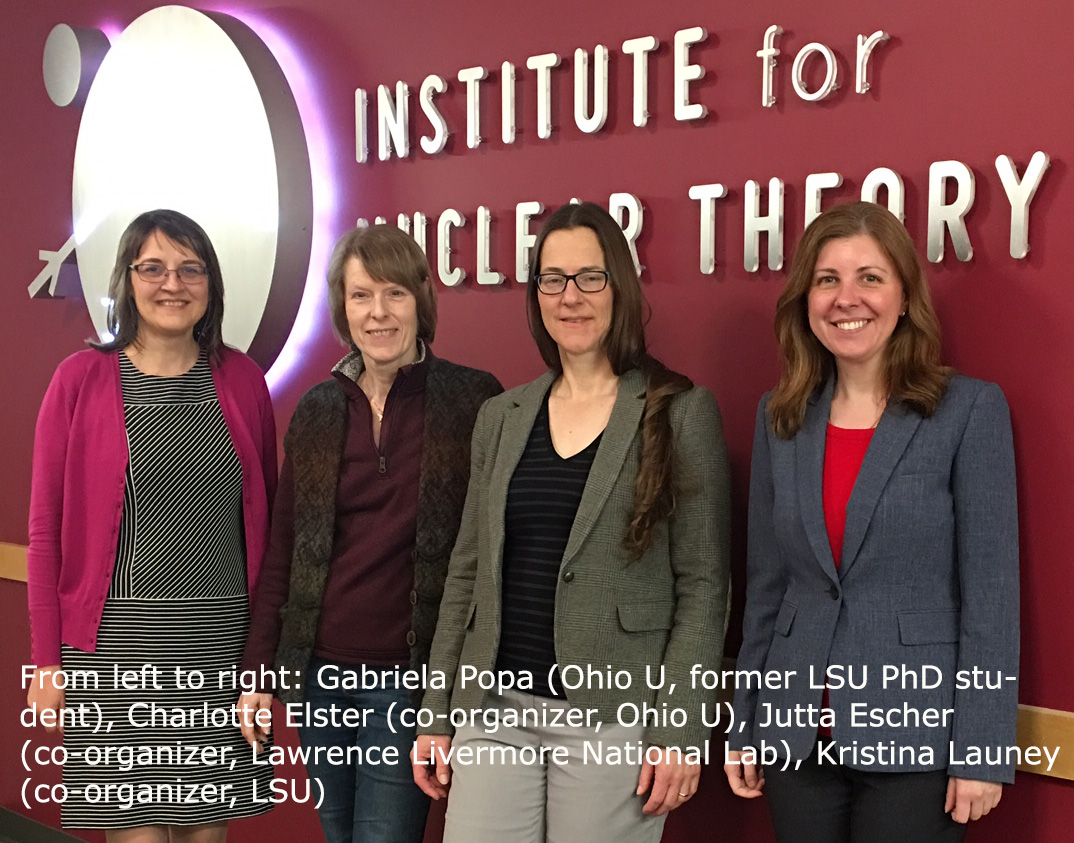Toward Predictive Theories of Nuclear Reactions Across the Isotopic Chart
Hosted at the Institute for Nuclear Theory at the University of Washington, Seattle, the INT Program INT-17-1a brought together physicists from the low-energy nuclear structure and reaction communities to identify avenues for achieving reliable and predictive descriptions of reactions involving nuclei across the isotopic chart.
 Recent years have seen exciting new developments and progress in nuclear reaction
theory that allow a progression towards a description of exotic systems and environments,
providing deeper insights into the dynamics of the nuclear many-body system, and setting
the stage for new discoveries. For very light nuclei, remarkable progress has been
made with ab initio theories, which describe the systems from first principles, using
realistic interactions. At the same time, an intense interest in heavier nuclei, aided
by the availability of dramatically increased computing power, has driven new developments
in shell-model approaches and density-functional theories. These structure approaches
provide crucial input for reaction descriptions. A collective effort of the reaction
and structure community is essential to address major open questions about the nature
of strongly interacting matter and the origin of the elements.
Recent years have seen exciting new developments and progress in nuclear reaction
theory that allow a progression towards a description of exotic systems and environments,
providing deeper insights into the dynamics of the nuclear many-body system, and setting
the stage for new discoveries. For very light nuclei, remarkable progress has been
made with ab initio theories, which describe the systems from first principles, using
realistic interactions. At the same time, an intense interest in heavier nuclei, aided
by the availability of dramatically increased computing power, has driven new developments
in shell-model approaches and density-functional theories. These structure approaches
provide crucial input for reaction descriptions. A collective effort of the reaction
and structure community is essential to address major open questions about the nature
of strongly interacting matter and the origin of the elements.
The 5-week program was organized by Jutta Escher (Lawrence Livermore National Lab), Charlotte Elster (Ohio University), Kristina Launey (LSU), and Dean Lee (North Carolina State University). In addition, a 1-week workshop, "Nuclear Reactions: A Symbiosis between Experiment, Theory and Applications" with co-organizers Jeff Blackmon (LSU) and Nick Scielzo (LLNL), was dedicated to the intersection of experiment, theory, and applications. The workshop focused on connecting theory developments to experimental advances and data needs for astrophysics and other applications.
"The integration of new structure and reaction theories will have a significant impact on nuclear science, and involvement in the INT program positions LSU's faculty and students to play a key role in the scientific discoveries," said Jeffrey Blackmon, Russell B. Long Professor, LSU Department of Physics & Astronomy.
The program’s aim was to intensify the dialogue and to work towards a better integration of the complementary theory efforts. The embedded workshop specifically intended to integrate experimental research as well as to take into account needs of the nuclear data community.
“LSU was instrumental in the organization of the program with impacts on the selection of topics and discussions, as well as keynote speakers critical to meeting the goals of the program, and on guiding discussions toward addressing current needs in theory and experiment,” said Kristina Launey, assistant professor. The LSU nuclear physics group also brought strong expertise to the program in the areas of experimental techniques at radioactive beam facilities and ab initio modeling. In addition, four LSU graduate students had the opportunity to participate in the program and to get involved in collaborations with other institutions.
Representatives from LSU Physics & Astronomy attending the event included: Jeff Blackmon, Kristina Launey, Tomas Dytrych, Ali Dreyfuss, Robert Baker, Grigor Sargsyan, David Kekejian, and Jerry Draayer's former PhD students, Jutta Escher (LLNL) and Gabriela Popa (Ohio U).
For more information on the INT Program INT-17-1a, visit http://www.int.washington.edu/PROGRAMS/17-1a/